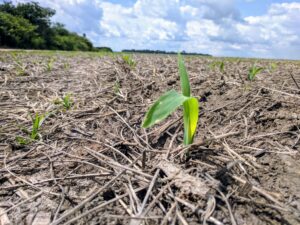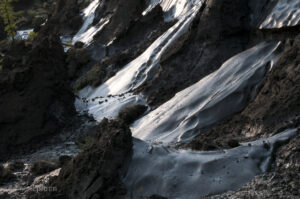Extreme weather and the jet stream

Weather records are now routinely getting shattered across the United States, with recent severe rainstorms in California, freezing temperatures in Texas, and a warm January thaw for the northeast. Jennifer Francis, Senior Scientist at the Woodwell Climate Research Center, joins Host Steve Curwood to explain why a climate disrupted jet stream is behind much of this extreme weather.
Read more and listen on Living on Earth.
Natural weather weirdness boosted by climate change behind extreme start to 2023

In a world getting used to extreme weather, 2023 is starting out more bonkers than ever and meteorologists are saying it’s natural weather weirdness with a bit of help from human-caused climate change.
Much of what’s causing problems worldwide is coming out of a roiling Pacific Ocean, transported by a wavy jet stream, experts said.
Farming destroyed Brazil’s rain forests. It could also save them

In a field of bare red dirt in São Paulo state, Paula Costa is trying to turn back the clock. Five hundred years ago, this land was part of the Mata Atlantica, a dense, diverse rain forest that covered 15% of Brazil. Its trees stretched more than 2,000 miles along the eastern Atlantic coast, and far inland. But today 93% of the forest has been stripped of trees, with much of it turned over to monoculture farming. Costa, a 36-year-old biologist, bangs the ground with her fist: it’s hard, the dry soil degraded by the tropical sun.
Yet on this sweltering morning in March 2022, a few green shoots have forced their way through the surface. The rain forest is making a comeback. “These will be jack beans. These are millet. These are radishes,” she says, fingering them lovingly. “They’re going to bring the soil back to life.”
Scientists say Arctic warming could be to blame for blasts of extreme cold
Research suggests that climate change is altering the jet stream, pushing frigid air down to southern climes more frequently. But the scientific jury is still out.

The data is clear: Rising global temperatures mean winters are getting milder, on average, and the sort of record-setting cold that spanned the country Friday is becoming rarer. But at the same time, global warming may be altering atmospheric patterns and pushing harsh outbreaks of polar air to normally moderate climates, according to scientists who are actively debating the link.
Drastic changes in the Arctic, which is warming faster than anywhere else on Earth, are at the center of the discussion. Shifts in Arctic ice and snow cover are triggering atmospheric patterns that allow polar air to spread southward more often, according to recent research.
Read more on The Washington Post.
Amid the desert surroundings of this year’s UNFCCC Conference of the Parties (COP27) in Egypt, Woodwell scientists called out the urgent climate crisis in the Arctic, which is impacting both local communities and the entire planet. 82% of climate models in use by the Intergovernmental Panel on Climate Change (IPCC) do not represent carbon emissions from thawing permafrost. As a< result, the world’s policymakers are underestimating how aggressively we need to reduce fossil fuel emissions to avoid the worst consequences of climate change.
At COP27, a team from Permafrost Pathways was pushing to highlight permafrost thaw within the greater discourse and amplify the voices of Northern communities who are being most impacted by rapid Arctic warming. Although action at this year’s conference was slow in getting off the ground, cover decision, and other outcomes built on this momentum with new declarations to step up mitigation, as well as pledges for loss and damage funding.
Boston is losing its snow wicked fast
New England is warming more quickly than almost anywhere else on Earth.

My first winter in Boston, the last patches of snow on my street didn’t melt until late June. It was 2015, the year the city broke its all-time record for annual snowfall: 110.3 inches, more than twice the average. Public transportation morphed into a hellscape. Schools racked up so many snow days that some had to extend the academic year. Dogs began to summit snowbanks to break out of fenced-in yards; a homegrown Yeti appeared to help locals shovel. The city eventually ran out of places to dump the piles of snow—prompting then-Mayor Marty Walsh to consider throwing it all into the harbor like so much British tea.
Continue reading on The Atlantic.



